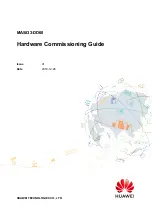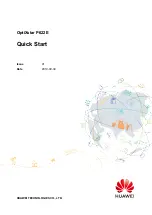
LOHU 2425PX
User Manual
----------------------------------------------------------------------------------------------------------
-----------------------------------------------------------------------------------------------------------------------------------------------------------------------------------------------------------------
Voltlaan 408 – 2681 TV Monster – Netherlands
Tel : +31208080743
Email : [email protected]
Website : www.lohuisnetworks.com
International Numbers:
Dubai :
United States:
United Kingdom:
France :
Italy:
Japan:
Argentina:
Brazil :
Pakistan:
+97142280111
+12123812983
+442033557669
+33170612716
+390662207084
+81345506867
+541152391407
+552135219853
+92217019804
-
26
-
WMM prioritizes traffic demands from different applications and extends Wi-Fi’s high
quality end-user experience from data connectivity to voice, music, and video applications
under a wide variety of environment and traffic conditions. WMM defines four access
categories (voice, video, best effort, and background) that are used to prioritize traffic so
that these applications have access to the necessary network resources. When your STA
connects to the AP, you can enjoy high-quality multimedia prioritization on your LAN by
enabling WMM.
Before enabling WMM, make sure your CPEs also support WMM.
Windows XP, Service Pack 2 is required to fully utilize WMM.
Super G and wireless parameters
Enabling Super G, your transmission rate could reach up to 108Mbps.
The following describes the advanced wireless parameters.
Field Description
RTS Threshold
The packet size used to determine whether it should use the CSMA/CD (Carrier Sense
Multiple Access with
Collision Detection) or the CSMA/CA (Carrier Sense Multiple Access with Collision
Avoidance) mechanism for packet transmission.
Fragmentation Length
This is the maximum packet size used for fragmentation.
Packets larger than the size programmed in this field will be fragmented.
The Fragment Threshold value must be larger than the RTS Threshold value.
Beacon Interval
This value indicates the frequency interval of the beacon.
A beacon is a packet broadcast by the Access Point to keep the network synchronized. A
beacon includes the wireless LAN service area, the AP address, the Broadcast destination
addresses, a time stamp, Delivery Traffic Indicator Maps, and the Traffic Indicator Message
(TIM).
Specifies the data beacon rate between 20 and 1000.
DTIM Interval
This value indicates the interval of the Delivery Traffic Indication Message (DTIM). A DTIM
field is a countdown field informing clients of the next window for listening to
broadcast and multicast messages. When the outdoor radio has buffered broadcast or
multicast messages for associated clients, it sends the next DTIM with a DTIM Interval value.
Clients can hear the beacons and awaken to receive the broadcast and multicast messages.
Space in meters This space in meter is used for extending ACK time-out
destination. The setting range is 0-36000.
Preamble Type A long transmit preamble may provide a more reliable connection or
slightly longer range. A short transmit preamble gives better performance. Auto is the
default Antenna
Select the desired antenna for transmitting and receiving.
“Primary” is the default and must.













































